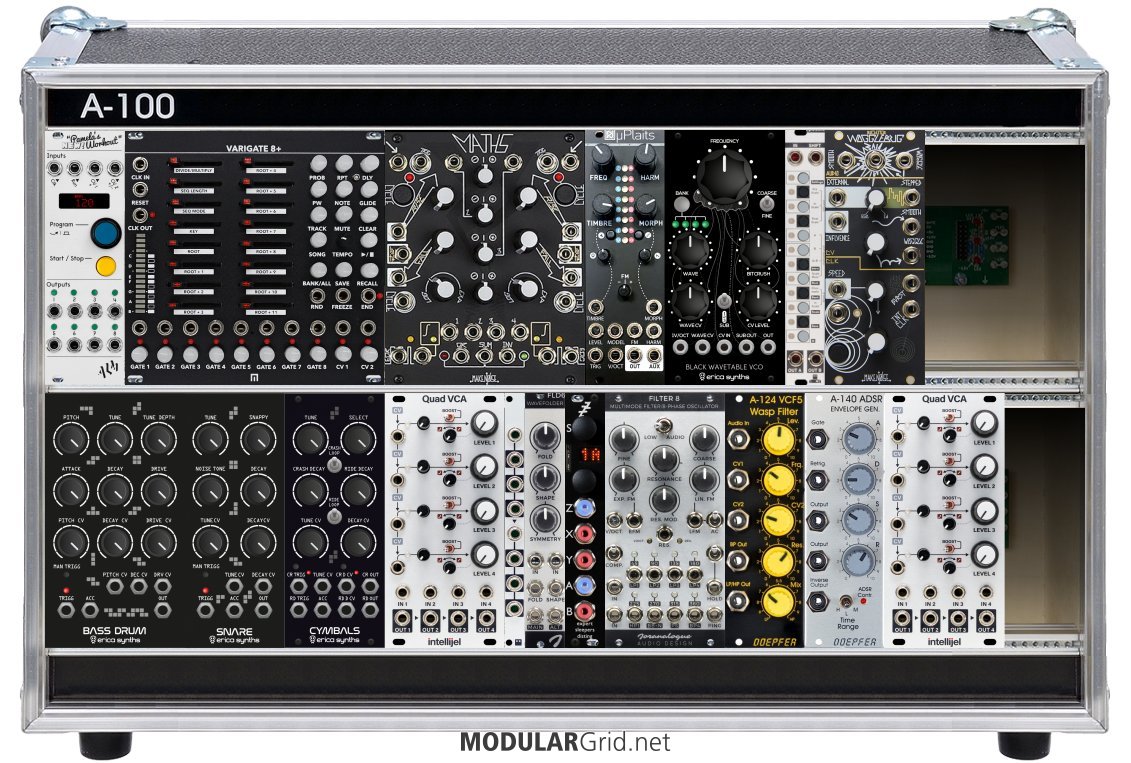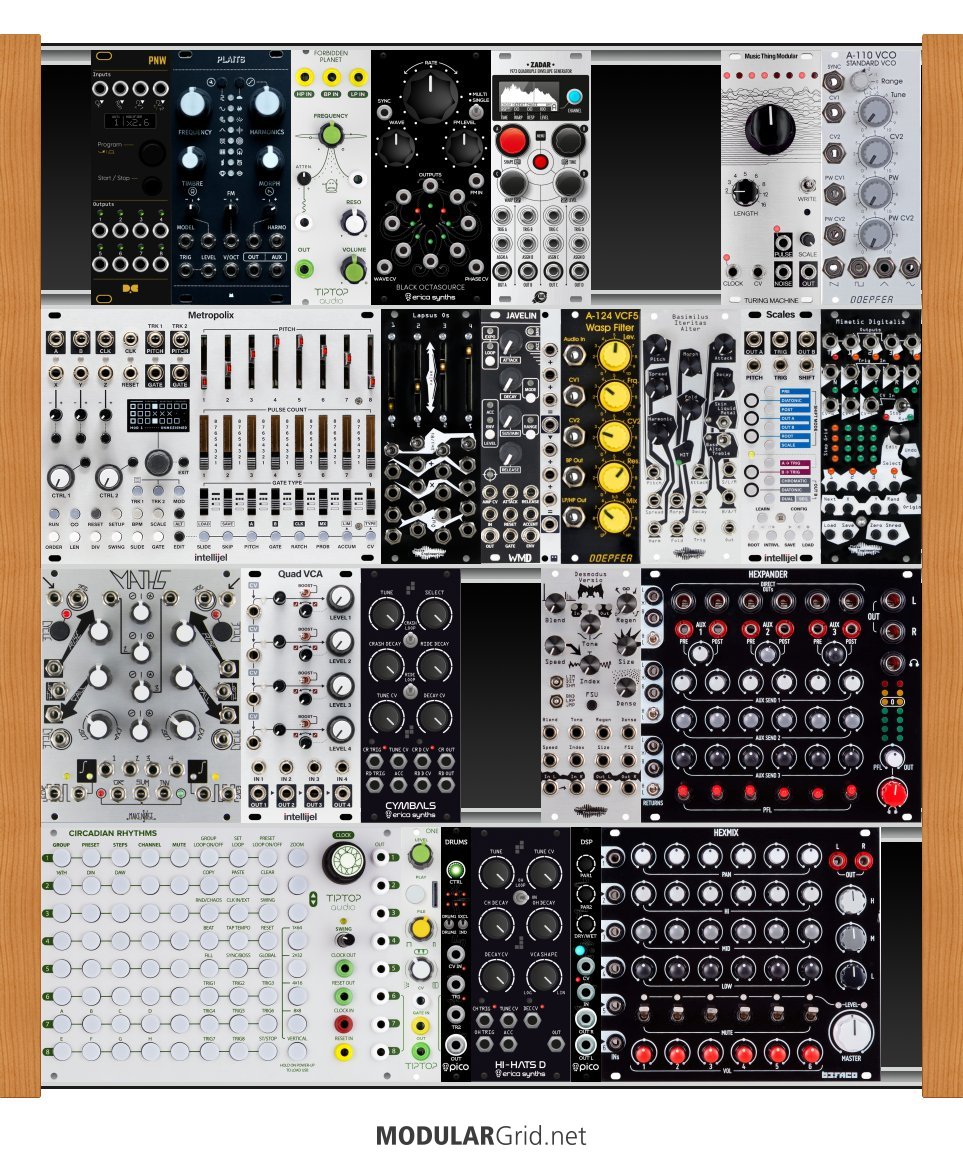Thanks for the response!
I do have an audio interface, but having done some research, I think an output module would certainly help me.
HAHAHA - to some extent they are marketing snake oil - 1st try without at all (probably will work fine), if you experience clippping (unwanted distortion) then try some passive attenuators (always useful) - if still not satisfied then try an output module...
Feel free to tell me to just go reading, but do you have any advice on paring back? I'm having difficulty imagining that I'll enjoy making music with pretty much one voice. I guess there's always the option of building a single voice with a lot of modulation possibilities, and filling in the rest of things in the DAW itself.
I'd start with (from the modules you think you want) Pams, Maths**, the erica vco, a filter, a quad vca - add a buffered mult and a module that does - mixing, inverting, attenuation - something like a happy nerding 3mia, if you can find one get it... yes I know maths has that built in - but see the 'footnote' - you want this on top of what maths provides, trust me...
pams can generate random quantized pitch voltages as well as providing clock and envelopes
the idea is to slew (reduce the rate of change of) the learning curve so that you are not overwhelmed and can properly learn the modules that you have before buying anymore... once you feel that you know those modules inside and out and how they interact with each other then add one or 2 more modules and repeat the process and so on...
it's not that this is mandatory - it's just a tried and tested method... and it applies to modular synthesis (using basic building block modules to synthesize sounds***) and to what I call synthesis with modules (use complex modules to reach the same goal) or anywhere in between... which is probably where I have (and probably most people) end up
*no plan survives contact with the enemy - which is you, btw!!
**download the 'maths illustrated supplement' work your way through it a few times - it'll take a while - a few weeks or months probably - work out why, what and how it is doing what it does for each patch... and then use this as a jumping off point for your own experiments
***for example use a cascading vca, an lfo and a handful of basic utilities to patch up a vc crossfader or a vc panner or a compressor, instead of buying a crossfader module, a panning module or a compressor - as you don't necessarily need these al the time, but you might want them now and then - in other words always ask can I patch that with what I've got without compromising anything else, before buying a new module - which might end up with you then buying another set of cascading vca, lfo, various utilities instead of the dedicated module as it's more versatile
I appreciate the reminder to go slow--so long as I get a decent case, I'll always have room to grow
-- vandewhatering
indeed, and there's always another case - I have 8!!
tiptop mantis is a great starter rack!! best bang for buck hp/cost/decent power/manufacturer reputation!!!
btw - the quantizer is superfluous - varigate can output quantized sequenced pitch and pams can do quantized loopable random pitch... and you may find you don't really need an adsr - a large proportion of modular users just use ad or ar envelopes
"some of the best base-level info to remember can be found in Jim's sigfile" @Lugia
Utility modules are the dull polish that makes the shiny modules actually shine!!!
sound sources < sound modifiers < modulation sources < utilities


